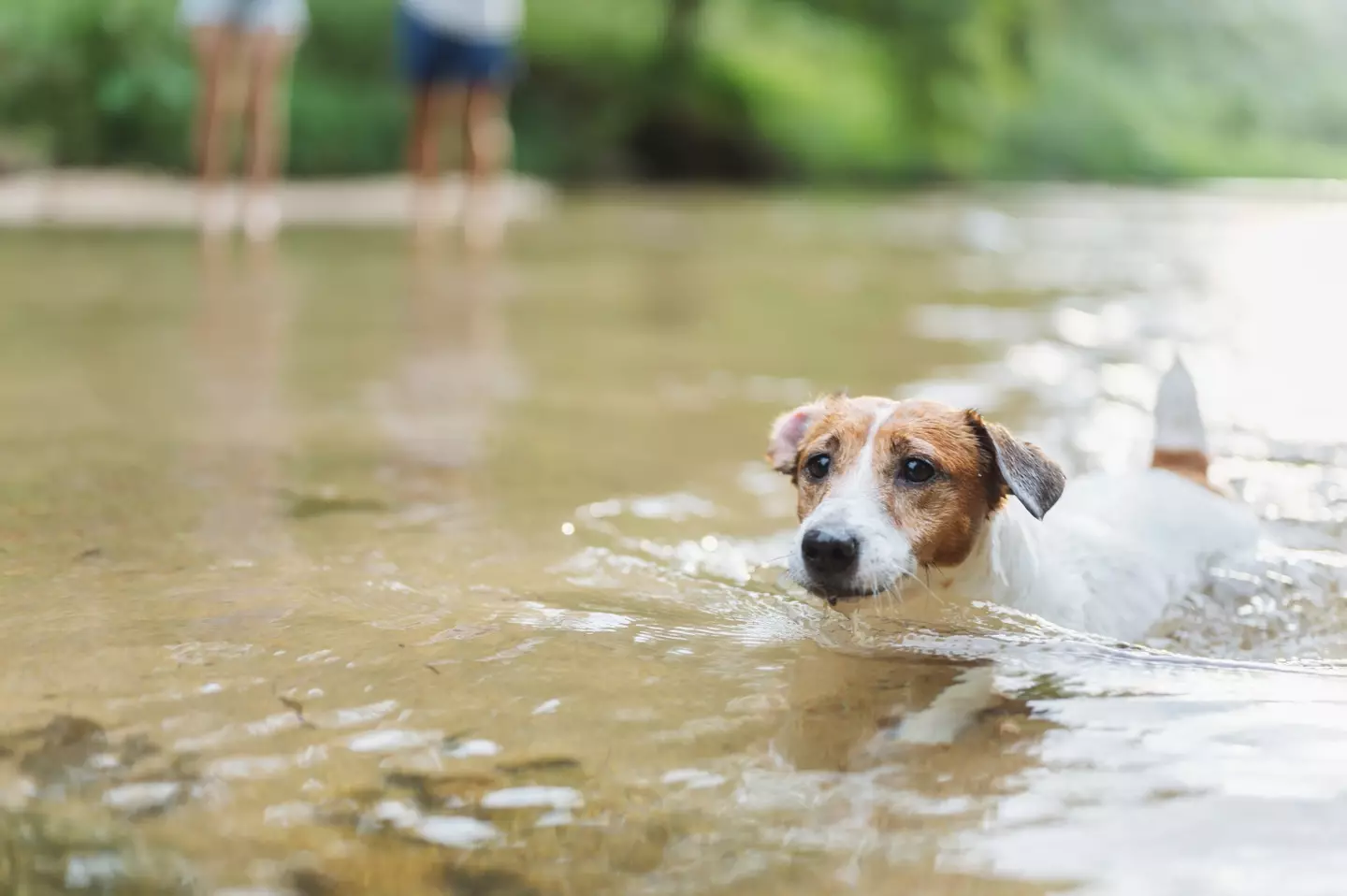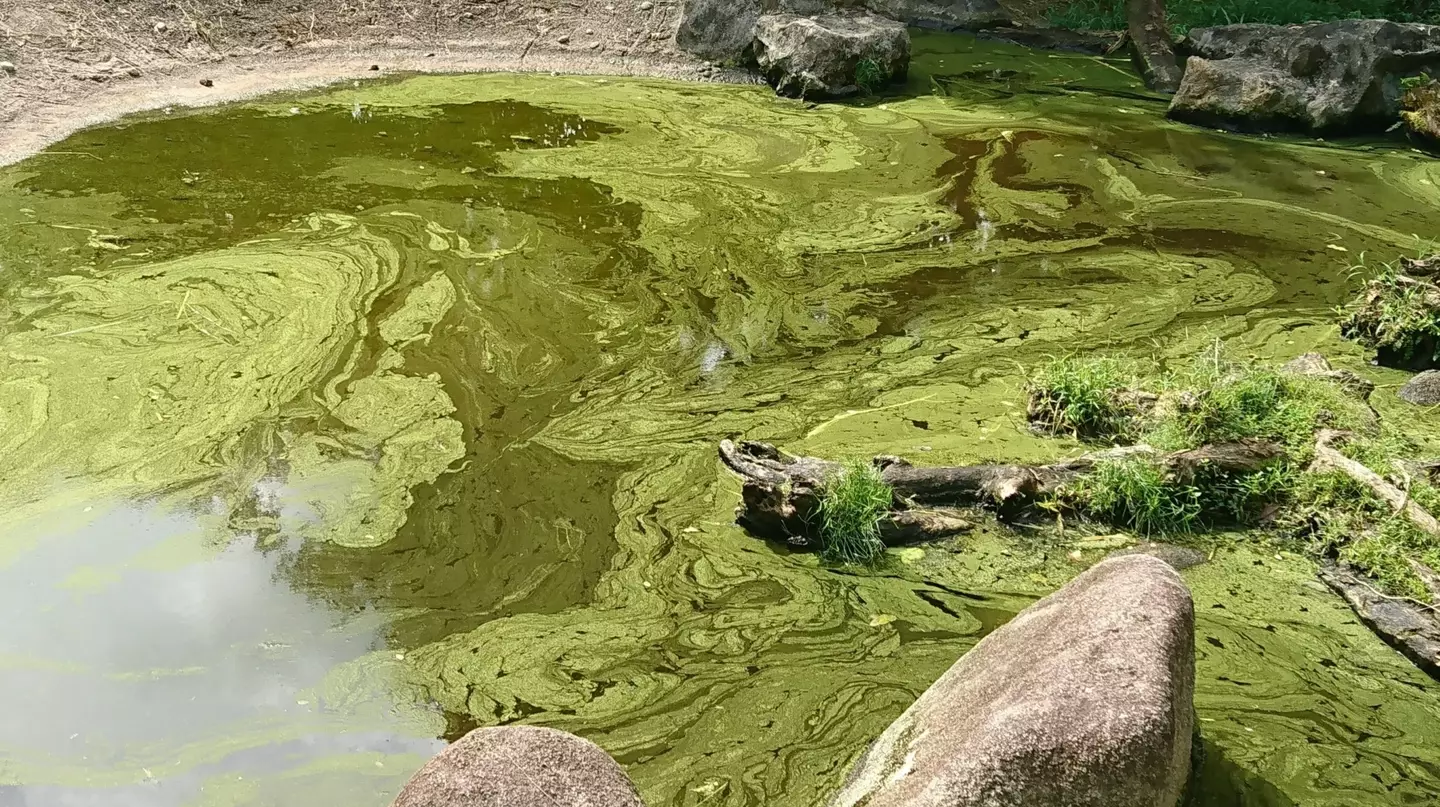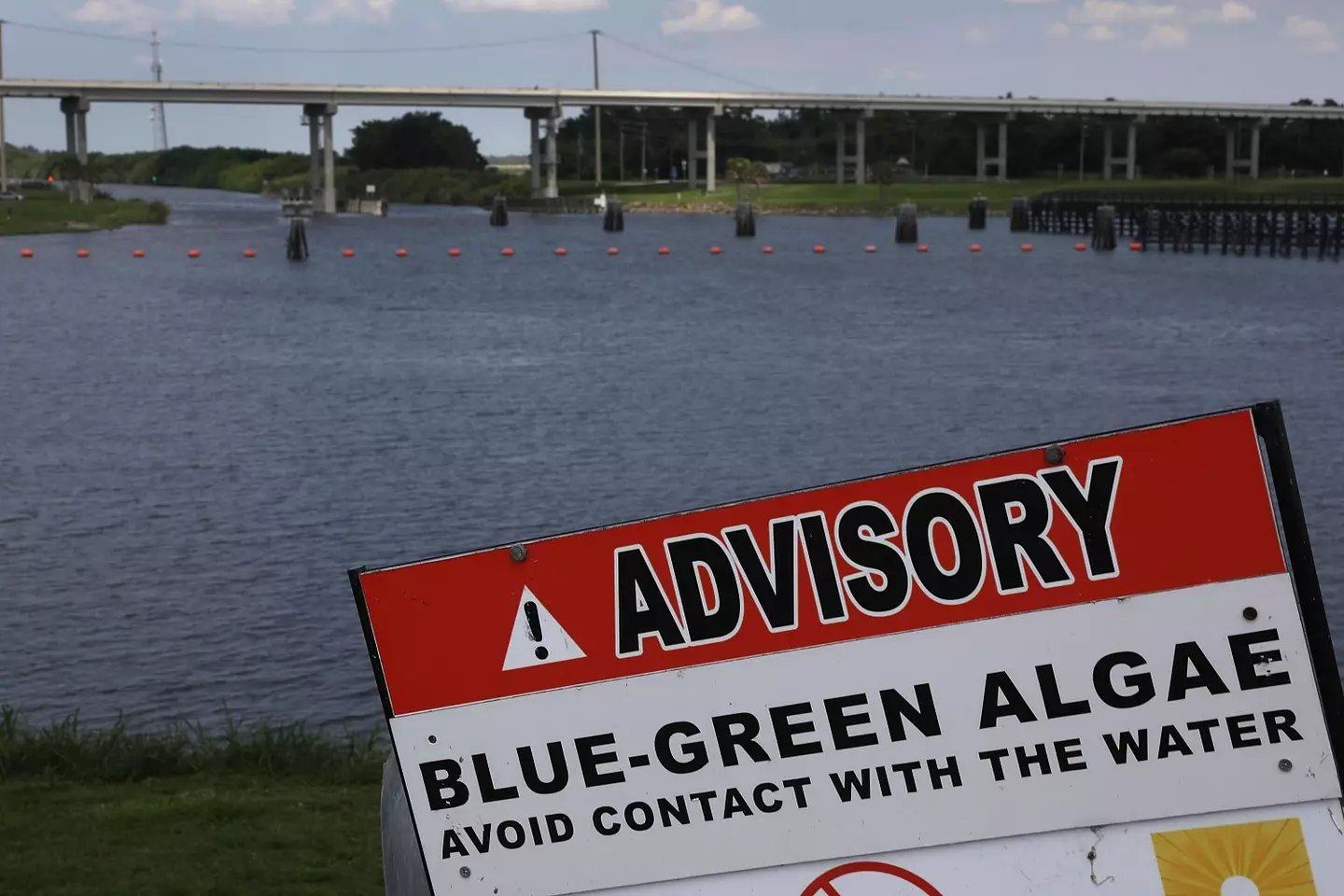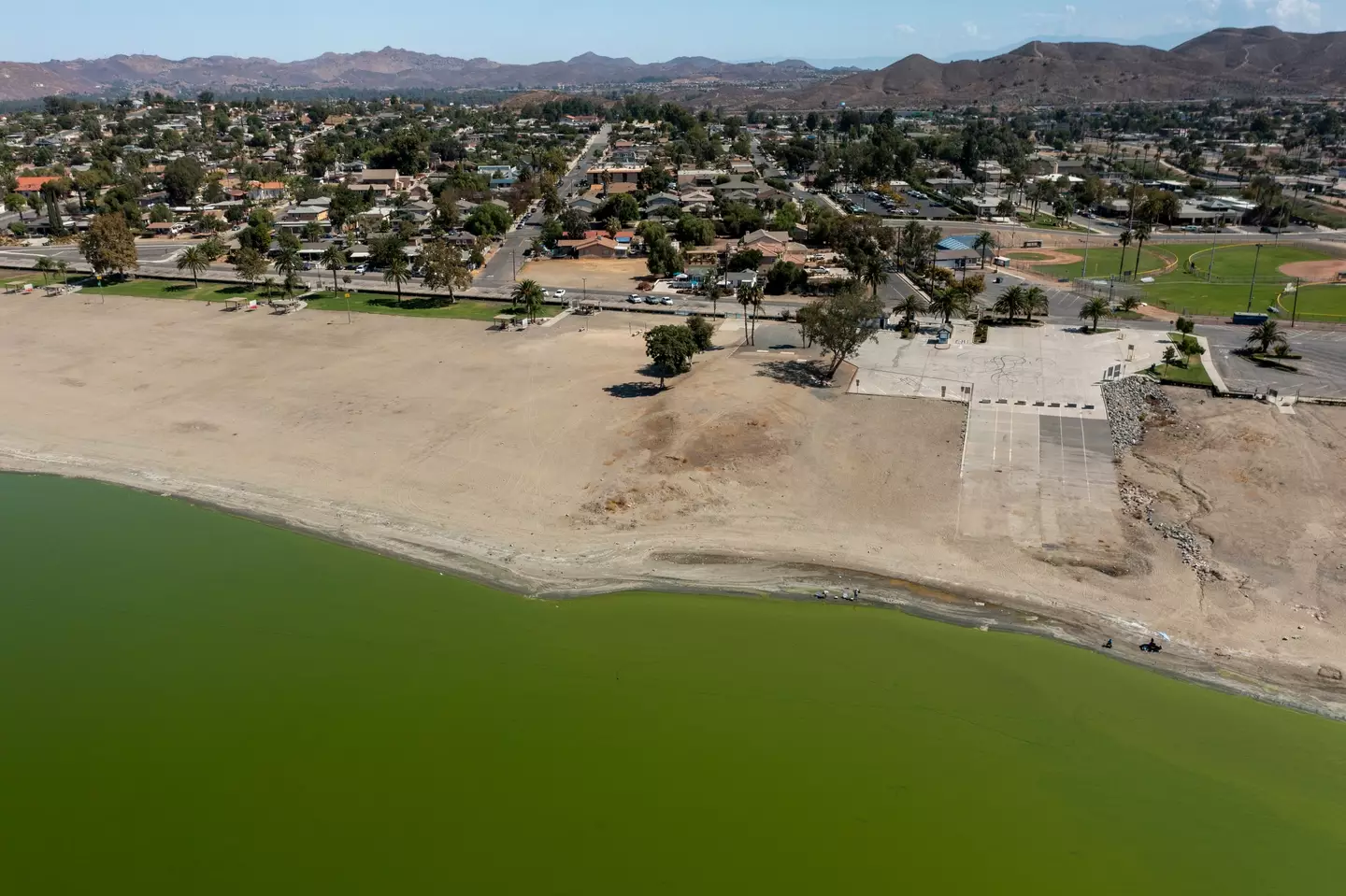
Vets in the UK are warning dog owners to make sure their dogs are safe from a bacteria that could kill them.
Right now, the weather is glorious across most parts of the UK - with temperatures regularly above 20 degrees Celsius on a daily basis.
So it should come as no surprise that us Brits are taking advantage of what little glorious domestic sunshine we get, and getting outdoors on evenings after getting back from work.

Advert
But a warning has been issued to those taking their pooches on extra long walks - or just their standard walk in general - over bacteria lurking that could be seriously harmful to dogs.
And in the worst cases, the bacteria could kill your beloved canine by stopping a dog’s liver from functioning properly.
What is the bacteria?
Known as blue-green algae, it isn't actually blue at all. But it is the term used to describe a group of bacteria known as cyanobacteria.
It's also not algae, so the name as a whole is a little bit of a curveball.
Advert
According to animal charity Blue Cross, the organisms got the 'blue-green algae' name because they often give the appearance of algae when they clump together in bodies of water.
Where is blue-green algae found?
Blue-green algae is commonly found in waterways where there is no flow or current.
We're talking lakes, slow moving rivers, and ponds.
In hot weather, the bacteria forms and multiplies like wildfire to form the 'blooms' of blue-green algae on the water.
Advert

What does blue-green algae look like?
You cannot see blue-green algae unless it clumps together so the risk is there even if you think you've assessed a river before letting your dog go for a splash.
According to Blue Cross, when it does clump together, or when blue-green algae blooms on the water, it can look like a blue-green scum has appeared on the surface of the water. There could also be green flakes, greenish bundles or brown dots in a pond, lake or stream.
You could see a green, blue-green or greenish-brown paint on the surface of the water, as well as foam around the edges of ponds and lakes.
Advert
"You may notice dead fish in ponds or lakes with a high concentration of toxic blue-green algae. Do not let your dog drink from any water containing dead animals," Blue Cross says.

Vet's warning
Vet Catherine Burke, from charity People's Dispensary for Sick Animals (PDSA), said: “Blue-green algae can grow in all aquatic environments, but it’s most prevalent in still or stagnant water, like lakes or rivers, during summer.
"This particular type of bacteria is highly poisonous to animals, and can sadly be fatal, or result in long-term health problems for those that survive.
Advert
"Dogs are particularly at risk, as they are more likely to drink from ponds while out on a walk, or groom themselves after swimming in affected water. However – the more aware we are of the potential dangers, the better we can protect our precious four-legged friends."
Burke added: "Be vigilant when walking your dog near any form of water, and if it looks bright green in colour, avoid at all costs. Never let your pooch drink from a pond or lake with dead fish or animals in either, the water could be dangerously toxic and make your pet extremely ill with potentially fatal consequences.
"Your local council will put up signposts in areas regularly affected by blue-green algae, so make sure you scan the surroundings for any indication of danger before letting your dog go for a swim."

Blue-green algae symptoms
If your dog ingests blue-green algae they could start showing symptoms within 15 minutes. It could also take days, so you really should keep a close eye on them.
“Symptoms of blue-green algae poisoning can occur very quickly - within 15 minutes to several days after exposure - and even a small amount can be lethal to a dog, so it’s important to act quickly and contact your vet immediately," Burke said.
"Signs to look out for include vomiting, twitching, seizures, diarrhoea, increased thirst, drooling, breathing difficulties, or a collapse.
If you spot blue-green algae but there are no signposts to warn dog owners, you should report it to the Environment Agency on 0800 80 70 60.